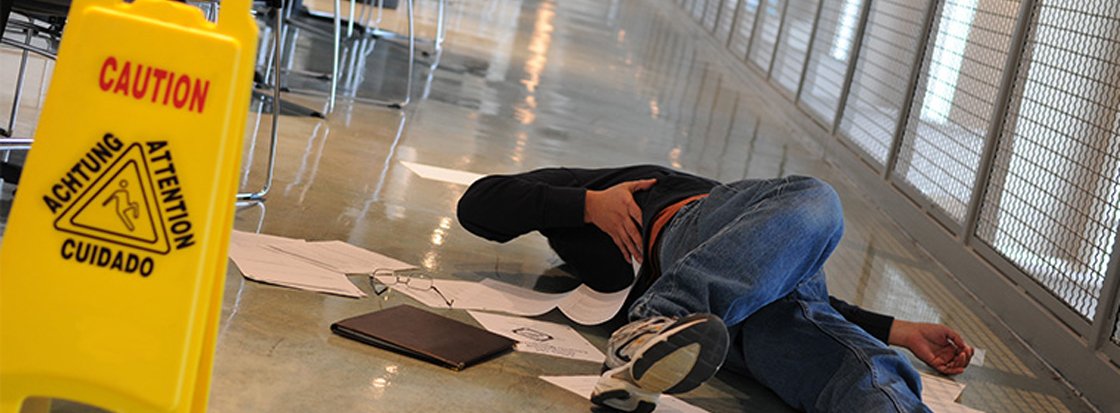Slip and Fall Injury
Slip and Fall Claims in Canada: Your Legal Options and Rights
If you've been hurt in a slip and fall on another person's property in Canada, you can get compensation. These are personal injury claims, and more specifically, under the Occupiers' Liability Act, which makes property owners and occupiers (businesses, landlords, municipalities) of property legally liable to make their property safe for visitors.

What the Law Says: Occupiers' Liability in Canada
According to the Occupiers' Liability Act (the details vary from province to province), every property owner—homeowner, store owner, landlord, or municipal government—is obligated to keep their property reasonably safe. Not taking steps to fix known hazard or violating safety standards is actionable if someone is injured.
For example, in Ontario, Section 3(1) of the Act states:
"A person who is in occupation of premises owes a duty to exercise such care as is reasonable having regard to the circumstances of the case to see that persons entering on the premises. are reasonably safe on the premises."
Common Slip and Fall Accident Causes in Canada
Slip and falls can happen pretty much anywhere—sidewalks, supermarkets, workplaces, and city parks. Some of the most common reasons include:
- Wet or recently mopped floors without warning
- Untreated snow or ice on walkways or parking lots
- Unstable flooring, loose mats, or cracked tile
- Dark staircases or hallways
- Spills of liquids in grocery store aisles or restaurant floors
- Broken or unstable steps and handrails
- Blocked walks or tripping areas
- Exposed wiring or cables
These hazards can typically be prevented by keeping the property in good condition and checking it in a timely fashion.
Examples of Slip and Fall Cases
Slip and fall incidents vary considerably in context. Some of the most common scenarios are:
- Commercial property incidents: Slips at shopping centers, retail stores, hotels, banks, and restaurants.
- On-the-job slips: Slips that occur in the workplace, either at an office, warehouse, or construction site.
- Home falls: Slips on private property, such as in leased residences or apartment complexes.
- Public property: Slips on municipally owned property like sidewalks, bus shelters, or community centers.
- Slip and falls at nursing homes: Falls and slips by elderly residents, occasionally the result of carelessness or improper care.
Time Limits:
Canada strictly enforces time limits for suing for personal injuries. Here are the facts you need to know:
- Average timeline: You have 2 years from when the accident happened to file a civil lawsuit.
- Municipal property: If your accident occurred on municipal property (e.g., municipal sidewalk), you typically must give notice in writing within 10 days. For example, Ontario’s Municipal Act, 2001, section 44(10), requires that this be done.
Failing to meet these deadlines can result in your claim being dismissed.
Proving a Slip and Fall Claim: What You Need
To prevail on a slip and fall claim, your legal advocate must prove that:
- There was a hazardous condition on the property.
- The occupier knew—or should have known—of the hazard.
- They did nothing to avoid the accident.
- Their negligence was the direct cause of your injury.
Video evidence, maintenance records, eyewitness accounts, and expert testimony can all assist your case. But your case will be harder to prove if there were warning signs displayed, or you were trespassing or being negligent when you fell.
Calculating Compensation: What You Can Claim
Compensation for a Canadian slip and fall claim can include economic and non-economic losses:
Economic Damages:
- Hospital, rehabilitation, and prescription expenses
- Lost income or diminished future earnings
- Out-of-pocket expenses
- Damage to property
Non-Economic Damages:
- Pain and suffering
- Loss of enjoyment of life
- Loss of enjoyment of life
- Scarring or disfigurement
- Loss of companionship (in wrongful death actions)
According to reports by the Public Health Agency of Canada, seniors’ falls constitute the leading source of injury hospitalizations, more than 81% of Canada’s injury hospitalizations of citizens aged 65 and older. In the case of death being involved, family members are able to claim survivor benefits and burial costs.
Settling vs. Going to Trial
Most Canadian slip and fall lawsuits are resolved outside of court. This saves both sides time, money, and emotional capital. But if the property owner or their insurance is not willing to take a reasonable settlement, your lawyer can propose going to trial.
An experienced legal team will continue negotiating even after a suit has been filed, and most cases settle before trial.
Why Hiring a Slip and Fall Lawyer Matters
Managing a personal injury claim by yourself can be daunting. An experienced slip and fall attorney can:
- Thoroughly investigate your accident
- Obtain evidence and expert opinion
- Take care of all communication with insurance companies
- Negotiate the maximum settlement
- Advocate on your behalf in court, if required
Most reputable Canadian law firms like us offer a complimentary initial consultation, and operate on a contingency fee basis—i.e., you don’t pay anything unless they win your case.
Slip and fall injuries have far-reaching physical, emotional, and financial implications. Wherever your accident has happened – on business property, the public sidewalk, or the job site – you have a right to hold perpetrators accountable. You can take action with the right legal representation and proper knowledge of your rights.
